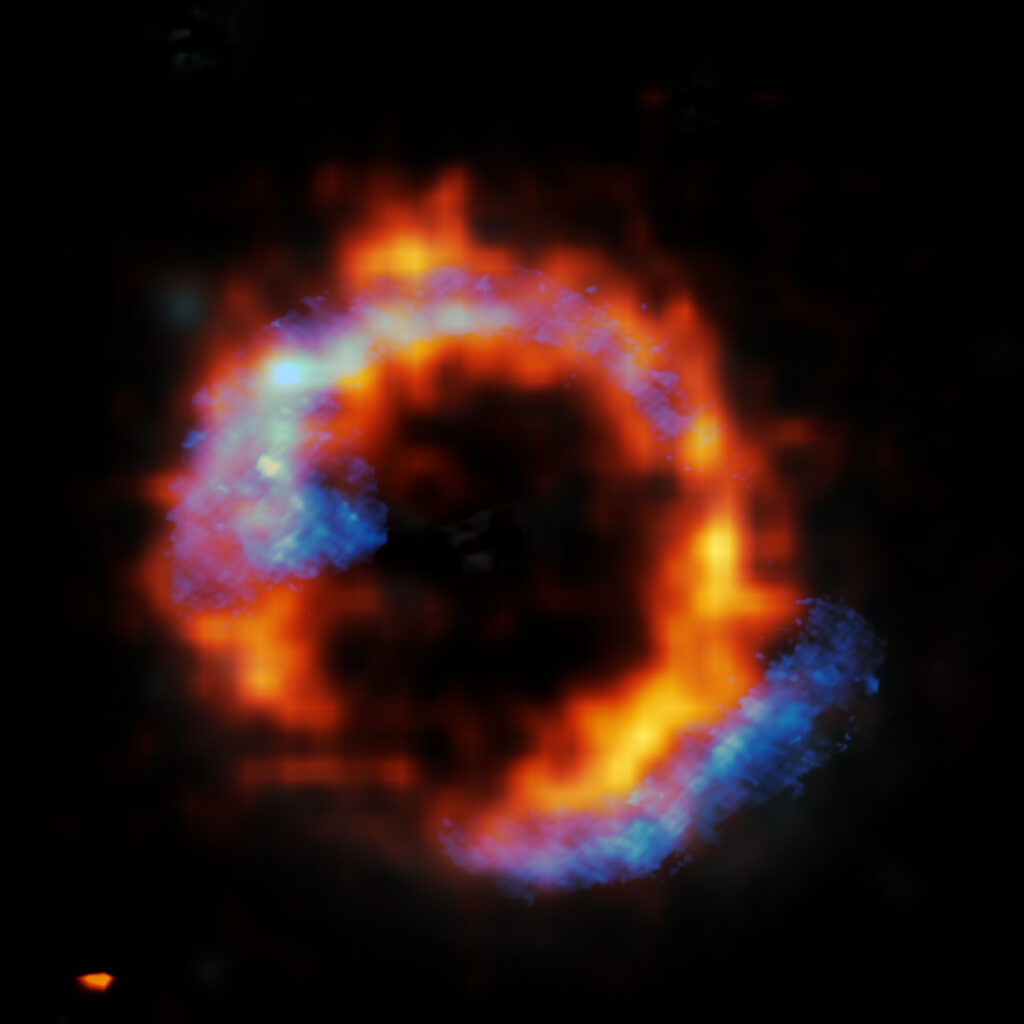Staff at the European Southern Observatory (ESO) have published a spectacular image of what looks like a huge cosmic ring. The object captured in the image is actually a Hyper Luminous Infrared Galaxy (HyLIRG) known as PJ0116-24. These incredibly bright objects glow because of the very intense star formation processes taking place within them.

But what leads to such activity? Previous studies have shown that such extreme galaxies tend to arise from mergers. Galactic collisions are thought to produce regions of dense gas in which intense star formation occurs.
But isolated galaxies can also turn into HyLIRGs as a result of internal processes, if star-forming gas is rapidly directed toward the nucleus, as the example of PJ0116-24 demonstrates. Its image was obtained during joint observations made by the ALMA radio telescope complex and ESO’s Very Large Telescope.
ALMA tracked the cold gas, shown here in blue, while VLT with its new and improved resolution spectrograph tracked the warm gas, shown in red. Through these observations, astronomers have discovered that the gas in PJ0116-24 is spinning in an organized fashion, rather than chaotically as it would after a galactic collision. This strongly suggests that a merger is not always necessary for a galaxy to become HyLIRG.
PJ0116-24 is so far away that its light took about 10 billion years to reach us. That’s twice as long as the Sun and the Earth have existed! Under normal circumstances, astronomers would simply never have been able to photograph it. Fortunately, the foreground galaxy (not shown here) acted as a gravitational lens, amplifying the light from PJ0116-24 and turning it into the so-called Einstein ring, which is captured in the image. Astronomers make great use of such capabilities because they allow them to study objects at the edge of the observable Universe.
According to ESO


